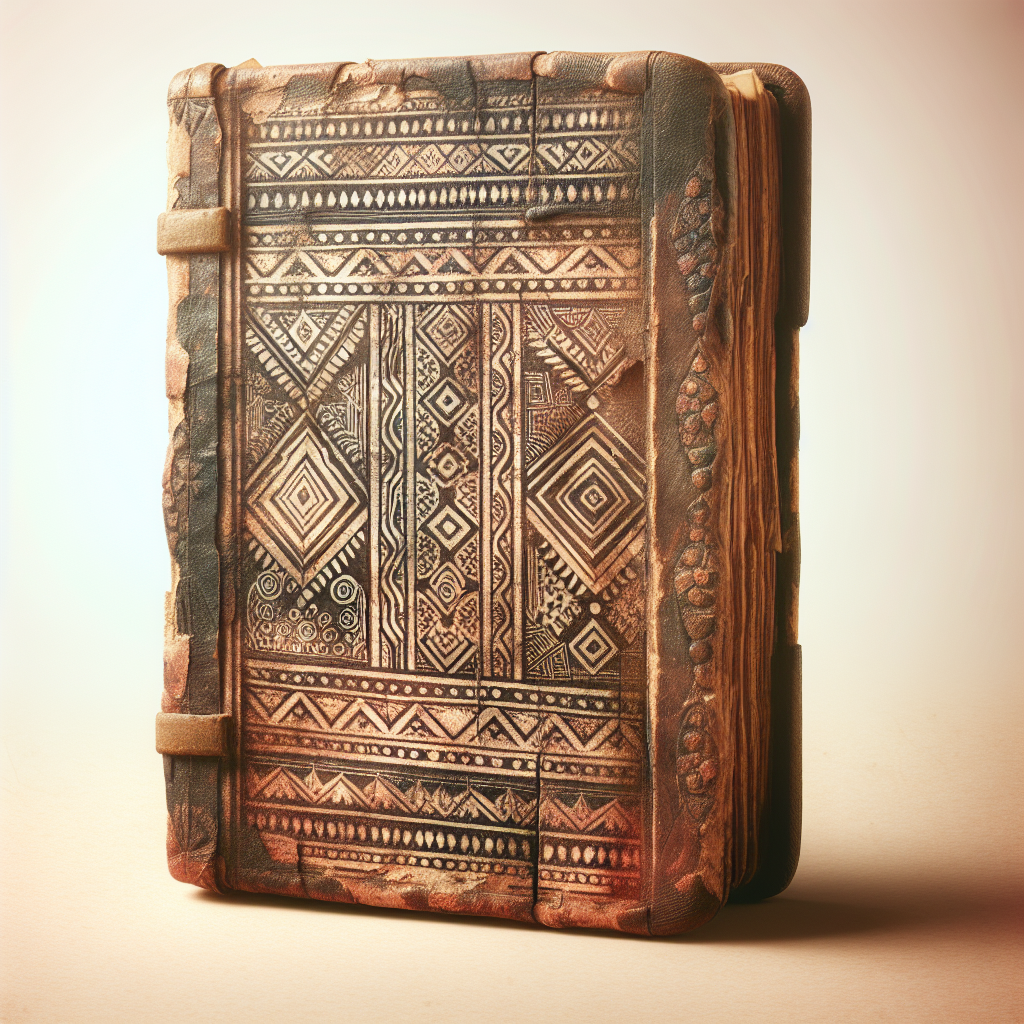Come with us on a journey to uncover the hidden literary gems nestled within the vibrant tapestry of India’s tribal communities. In this article, we will explore the linguistic and literary traditions that have flourished for centuries among these indigenous groups. From oral storytelling passed down through generations to the written works that capture the essence of their cultures, we will delve into the richness and diversity of the literary heritage of India’s tribal communities. So, join us as we celebrate the power of words and the preservation of cultural knowledge in these unique literary traditions.

Introduction
Welcome to our comprehensive article on the literary traditions of India’s tribal communities. In this article, we will explore the importance of tribal literature, the significance of oral tradition, the value of written manuscripts, the recurring themes and motifs found in tribal literature, the role of ritual and performance in preserving these traditions, the religious and mythological stories shared within tribal communities, the regional variations in tribal literature across India, and the impact of modernization on contemporary tribal authors. Join us as we delve into the fascinating world of tribal literature and celebrate the rich cultural heritage of India’s diverse tribal communities.
Importance of Tribal Literature
Tribal literature holds a significant place in the overall cultural fabric of India. It not only reflects the unique experiences and perspectives of various tribal communities but also serves as a medium to preserve their cultural heritage. Through tribal literature, these communities celebrate their identity, history, traditions, and values, passing them down from one generation to another. By exploring the literary treasures of India’s tribal communities, we gain a deeper understanding of their lives, beliefs, and rich oral and written traditions.

Oral Tradition
One of the most important aspects of tribal literature is its strong oral tradition. Through generations, tribal communities have passed on their knowledge and wisdom through spoken words. This oral tradition encompasses myths and legends, folklore and fables, songs and ballads.
Myths and Legends
Myths and legends play a crucial role in tribal literature, serving as vehicles to explain the creation of the world, the origins of the tribe, and the supernatural beings that shape the universe. These stories often feature powerful deities, spirits, and heroes, who navigate epic quests and challenges, reflecting the values and beliefs of the tribal communities they emerge from.
Folklore and Fables
Tribal folklore and fables are a treasure trove of moral teachings and life lessons. They often revolve around relatable characters and situations, exploring diverse themes such as love, friendship, bravery, and wisdom. Through these stories, tribal communities impart their values and societal norms, ensuring that younger generations internalize the tribal ethos.
Songs and Ballads
Music has always been an integral part of tribal culture, and songs and ballads form a vital component of their oral tradition. These lyrical compositions celebrate various aspects of tribal life, including love, nature, and daily struggles. Passed down through generations, these songs connect tribal communities and serve as important cultural markers.
Written Manuscripts
While oral tradition holds immense significance, written manuscripts also play a significant role in preserving tribal literature. Some of the notable forms of written manuscripts include palm leaf manuscripts, birch bark manuscripts, and ancient scripts.
Palm Leaf Manuscripts
Palm leaf manuscripts are a traditional form of written documentation used by many tribal communities. These manuscripts are painstakingly etched on dried palm leaves, featuring a collection of texts that cover various topics such as religious rituals, mythological tales, and medicinal knowledge. The longevity of palm leaf manuscripts ensures that the wisdom passed down through generations remains alive.
Birch Bark Manuscripts
Certain tribal communities in India utilize birch bark as a writing material. These manuscripts, etched on thin strips of birch bark, contain diverse textual content, including religious texts, historical accounts, and cultural practices. The use of birch bark reflects the resourcefulness and adaptability of tribal communities in preserving their knowledge.
Ancient Scripts
In addition to palm leaf and birch bark manuscripts, tribal literature also encompasses ancient scripts that have been discovered over the years. These scripts provide valuable insights into the languages, customs, and traditions of tribal communities, offering a glimpse into their rich literary heritage.

Themes and Motifs
Tribal literature often explores several recurring themes and motifs that reflect the cultural, social, and environmental realities of the communities they represent. Some of the prominent themes include nature and environment, heroes and heroines, and spirituality and religion.
Nature and Environment
Tribal communities have deep-rooted connections with nature and the environment, which is beautifully depicted in their literature. Through vivid descriptions and poetic expressions, tribal literature celebrates the natural world, highlighting its beauty, power, and profound influence on human lives. This connection to nature serves as a reminder of the importance of preserving the environment.
Heroes and Heroines
Heroes and heroines feature prominently in tribal literature, embodying the qualities and values esteemed by the community. These characters embark on courageous journeys, face challenges, and often emerge as symbols of hope and inspiration. By celebrating these heroes and heroines, tribal literature reinforces the importance of bravery, integrity, and perseverance.
Spirituality and Religion
Religion and spirituality are integral to the lives of tribal communities, and tribal literature reflects this deep-rooted connection. Through religious and mythological stories, tribal literature explores the relationship between humans, deities, and spirits. These stories offer moral guidance, teach ethical values, and depict the significance of ritual practices within the community.
Ritual and Performance
In tribal literature, rituals and performances hold immense cultural and social value. They provide a platform for communities to come together, celebrate their shared heritage, and preserve their traditions.
Theater and Dance
Theater and dance play a vital role in tribal communities, often serving as a medium to communicate stories, traditions, and beliefs. These vibrant performances embody the cultural identity of the tribe, and through their artistic expressions, tribal communities build a sense of collective belonging.
Storytelling and Oral Performances
Storytelling and oral performances are central to the preservation of tribal literature. Skilled storytellers captivate audiences through their narratives, keeping the oral tradition alive. These performances allow tribal communities to pass down their myths, legends, and folklore, ensuring that the wisdom and knowledge are not lost over time.
Ceremonial Practices
Ceremonial practices are an essential part of tribal life, and they often have deep symbolic meaning. Tribal literature explores these practices, delving into the rituals and ceremonies that mark important life events such as birth, marriage, and death. Through storytelling and literary depictions, tribal literature reinforces the significance of these ceremonies in reinforcing the social fabric of the community.
Religious and Mythological Stories
Religious and mythological stories form a significant component of tribal literature, offering insights into the cosmology, beliefs, and practices of different tribal communities.
Creation Myths
Creation myths explore the origin of the universe, providing alternative narratives to those found in mainstream religious texts. These myths offer a unique perspective on the creation of the world and the role of humans within it, often blending supernatural and natural elements to create a coherent worldview.
Deities and Spirits
Tribal literature introduces us to a wide array of deities and spirits that hold great significance within tribal communities. These divine beings embody various qualities and are invoked through rituals and prayers, ensuring the protection and well-being of the tribe.
Quests and Journeys
Many tribal stories revolve around quests and journeys undertaken by characters seeking spiritual growth, enlightenment, or a resolution to a conflict. Through these narratives, tribal literature emphasizes the importance of personal growth, self-discovery, and overcoming challenges in one’s journey through life.
Regional Variations
Tribal literature in India showcases rich regional variations, with each region having its unique literary traditions, styles, and themes. Let’s explore some of the distinct features of tribal literature in Northeast India, Central India, and South India.
Northeast India
Northeast India is characterized by its diverse tribal communities with vibrant literary traditions. Each tribe has its distinct language, mythology, and storytelling techniques. Whether it is the Khasi and Garo communities of Meghalaya or the Naga tribes of Nagaland, the literary tapestry of Northeast India reflects the cultural amalgamation of the region.
Central India
Central India is home to a myriad of tribal communities that possess their distinct customs, languages, and literature. Tribes such as the Gond, Bhil, and Baiga have a rich oral tradition, with songs, folktales, and riddles forming an integral part of their cultural heritage. These literary expressions reflect the close connection between tribal communities and the natural environment.
South India
South India boasts a rich tapestry of tribal communities, each with its literary traditions. The tribes of Tamil Nadu, Kerala, Karnataka, and Andhra Pradesh boast a diverse range of folk songs, myths, and legends. The oral tradition thrives in these regions, with communities using storytelling and performance arts to pass down their cultural knowledge from one generation to another.
Contemporary Authors
While tribal literature has a strong foundation in oral traditions and ancient texts, it continues to evolve with the contributions of contemporary authors. These authors play a crucial role in preserving and revitalizing tribal literature, ensuring its relevance in the modern world.
Prominent Tribal Authors
Numerous tribal authors have emerged as prominent voices within the literary landscape, using their writings to shed light on the experiences, struggles, and aspirations of their communities. Authors such as Mahasweta Devi, C.K. Janu, Birendra Kumar Bhattacharya, and Aonghasami Samagra have made significant contributions to tribal literature, bringing attention to the issues faced by tribal communities and showcasing the immense talent within these communities.
Emerging Talents
Alongside established authors, there is a new generation of tribal writers who are making their mark on the literary scene. These emerging talents showcase the vibrant diversity of tribal literature and bring fresh perspectives to the ongoing narrative. Their writings capture the challenges faced by tribal communities in a rapidly changing world, while also celebrating their rich cultural heritage.
Impact of Modernization
Modernization and its accompanying challenges have had a profound impact on tribal literature and the communities it represents. While modernization brings certain benefits such as increased access to education and technology, it also poses threats to tribal traditions and languages. Contemporary tribal authors often navigate between preserving their cultural heritage and adapting to the changing world, thereby ensuring the continued relevance of tribal literature in the face of modernization.
Conclusion
In conclusion, tribal literature stands as a testament to the diverse and vibrant cultural heritage of India’s tribal communities. Through oral tradition, written manuscripts, rituals, performances, and contemporary writings, these communities have preserved and enriched their literary traditions. This literature, with its myths and legends, folklore and fables, and religious and mythological stories, offers a unique insight into the cultural, social, and spiritual fabric of tribal communities. By celebrating the literary treasures of India’s tribal communities, we acknowledge and honor their invaluable contributions to the world of literature and storytelling.
